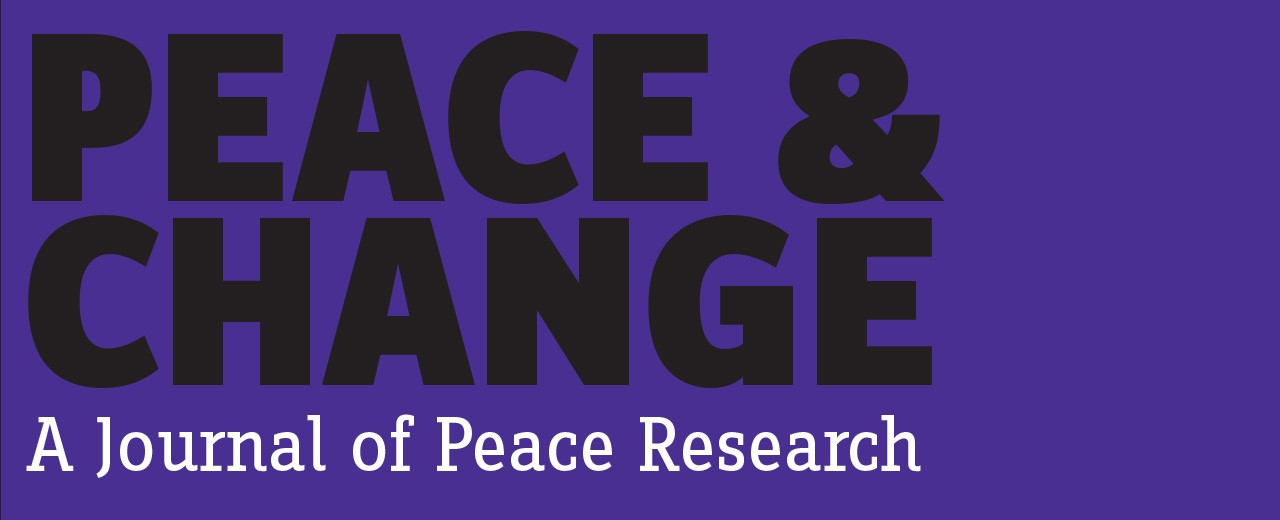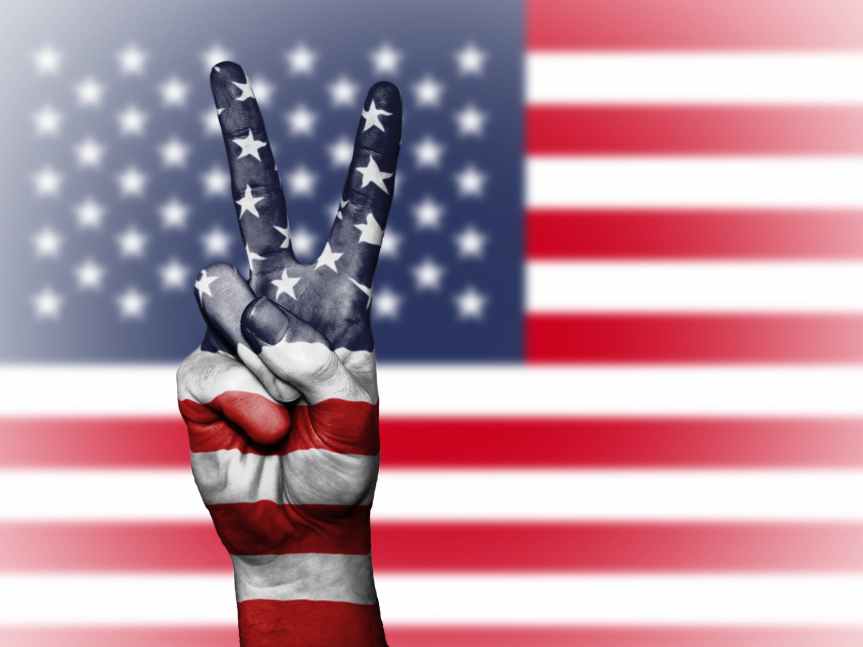By Roger Peace
History is most useful when approached as a series of decisions rather than events. Those choices can be analyzed in hindsight and assessed as to their wisdom or faults. Moreover, choices made at certain times can have long-range and profound effects.
One such time was the 1945-1947 period, when the Truman administration adopted policies and attitudes that set the stage for a long Cold War. Another was the 1989-1991 period, when the Cold War ended and the possibility of building a new world order was at hand. In both cases, the “peace dividend” that many citizens sought – a transfer of funds from military to domestic programs such as education and health care – evaporated. Instead of mutual aid and support, a vicarious “empire identity” was parlayed as the glue to unite Americans.
Two recent essays on the U.S. Foreign Policy History & Resource Guide website, “Cold War interventionism, 1945-1990,” and “The post-Cold War era, 1989-2001,” delve into how and why decisions were made in Washington at the outset of these periods. In the case of the Cold War, for example, six possibilities are laid out from which President Harry Truman could have chosen, the first three being on the peaceful side (he chose the fourth and fifth):
- A global New Deal as suggested by former Vice President Henry A. Wallace;
- Cooperative internationalism and full support for the United Nations as advocated by Eleanor Roosevelt;
- Peaceful coexistence, or détente, which emerged twenty-five years later;
- Containment or encirclement of the Soviet Union and opposition to “communist” movements around the world;
- Rollback or subversion of “communist” governments and movements; and
- Nuclear attack, the most aggressive option for which plans were drawn up but never implemented.
Having charted the decision-making process, the Cold War essay moves on to assess results. Viewed from a peace-oriented value perspective, these results are examined not primarily in terms of military success and national prestige but in terms of ethical considerations and international norms. Was it a war of aggression? Did the U.S. intervention contravene international law? Were the Geneva Conventions respecting civilians observed?
Apart from the Korean War and the Vietnam War (examined in separate essays), most U.S. interventions during the long Cold War were covert. The international relations scholar Lindsey O’Rourke, in Covert Regime Change: America’s Secret Cold War (2018), identifies 70 “regime change” interventions during the Cold War, of which 64 were conducted clandestinely through the CIA. Of these 64, five involved assassination plots, 13 involved U.S.-backed military coups and insurrections (9 succeeded), 16 were directed at manipulating elections (12 resulted in the U.S.-backed candidate winning), and 14 instigated sabotage and destabilization operations in Eastern Europe and the Soviet Union. Astoundingly, according to O’Rourke, “The United States supported authoritarian forces in forty-four out of sixty-four covert regime changes, including at least six operations that sought to replace liberal democratic governments with illiberal authoritarian regimes.”
The contradiction between stated U.S. principles and actual policies leads us to a third component of peace history – unpackaging official rationales and ideological presumptions. In the case of the Cold War, this requires a lengthy section on the origins of socialist and communist philosophies and movements, and the manner in which anti-communism has been used to support right-wing authoritarian governments. During the Cold War, the U.S. supported a host of dictatorial and repressive regimes, and covertly overthrew a number of democratic ones.
In the conclusion of this essay, I offer a succinct summary of lessons that may be drawn from this study:
If there is a paramount lesson to be learned from the Cold War, it is that the United States should shed its imperial identity and become a team player on the world stage, pursuing cooperation rather than military preponderance. Let Pax Americana follow Pax Britannica into the dustbin of history. American citizens need to be aware of the history and effects of U.S. foreign policies, cross-examine official rationales, and strengthen mechanisms of democratic accountability, thus enabling critical assessment of current U.S. policies and actions in the world. Ethical standards of behavior should apply to the United States no less than to other nations.
The latest essay on the U.S. Foreign Policy History & Resource Guide website, “Post-Cold War era, 1989-2001,” takes a similar approach in (1) highlighting the choices at hand at a crucial time (and the missed opportunities for creating a more peaceful world), (2) assessing policy results, (3) critiquing official rationales, and (4) probing lessons that might be drawn – a general peace studies approach to international relations and wars.
As with all essays on this open resource website, the post-Cold War essay is written for students and the general public, offers coherent and well-organized narratives, and is accompanied by an ample number of photos and images – 119 to be exact (and 125 in the Cold War essay). It synthesizes and builds on the work of expert scholars, offers analysis based upon available primary sources, and provides copious endnotes for independent examination of primary documents. The authors, Brian D’Haeseleer, Jeremy Kuzmarov, and Roger Peace, are scholars of U.S. military and foreign policy and experienced teachers. Professors, instructors, and teachers are encouraged to assign the essay, all or in part, to their students. All essays may be downloaded in PDF format, with or without images.
The Post-Cold War essay covers the U.S. invasion of Panama in December 1989, the Persian Gulf War in early 1991, “humanitarian interventions” in Somalia, Bosnia, and elsewhere, and the failed American crusade to remake Russia. The story begins with a missed opportunity to build a more peaceful, just, and cooperative world order.
On December 8, 1988, Soviet leader Mikhail Gorbachev presented a challenge to the world community to create a new world order based on cooperation rather than domination. “The formula for development at another’s expense is becoming outdated,” he told the United Nations General Assembly. “It is evident, for example, that force and the threat of force can no longer be, and should not be instruments of foreign policy.” To the surprise of many, the Soviet Union followed through and allowed the communist governments of Eastern Europe to fall as nonviolent revolutions swept through the region.
In December 1989, President George H. W. Bush met with Gorbachev on the island of Malta. Bush seemed upbeat after the meeting, telling reporters, “The arms race, mistrust, psychological and ideological struggle, all those should be things of the past.” That was a good start for remaking the world order. Rhetoric notwithstanding, however, the U.S. foreign policy establishment viewed Moscow’s retreat from great power domination as an opportunity to advance U.S. interests and establish the U.S. as the sole superpower in the world. Less than three weeks after the Malta summit, U.S. forces invaded Panama in a classic “gunboat diplomacy” maneuver, denounced by the UN General Assembly as a “flagrant violation of international law.”
Mikhail Gorbachev’s vision of a more cooperative and peaceful world order gradually receded from view during the post-Cold War period. In its place, U.S. leaders advanced the idea of an American-led world order secured by U.S. military predominance. Those who hoped for a “peace dividend” at the end of the Cold War were sorely disappointed as new threats from abroad were found to replace the vanishing “communist threat.” As for Russia, the U.S.-applied capitalist “shock therapy” produced mostly shock and little therapy as social welfare systems were eviscerated and poverty rose precipitously. All in all, as the historian Odd Arne Westad notes, “the 1990s was a lost opportunity for international cooperation, particularly to combat disease, poverty and inequality.”
What might the world be like today if different choices had been made in the post-Cold War era? Might the transfer of money and talent to constructive activities been realized, enabling governments to competently address environmental threats, pressing economic needs, and epidemic diseases? Though the opportunity was missed in the 1990s, the future is still open to this healing possibility.
The U.S. Foreign Policy History & Resource Guide is an open resource, non-commercial, educational website sponsored by the Historians for Peace and Democracy and the Peace History Society. If interested in assisting this website project (production of essays or public outreach), please contact Roger Peace, website coordinator, rcpeace3@embarqmail.com.




